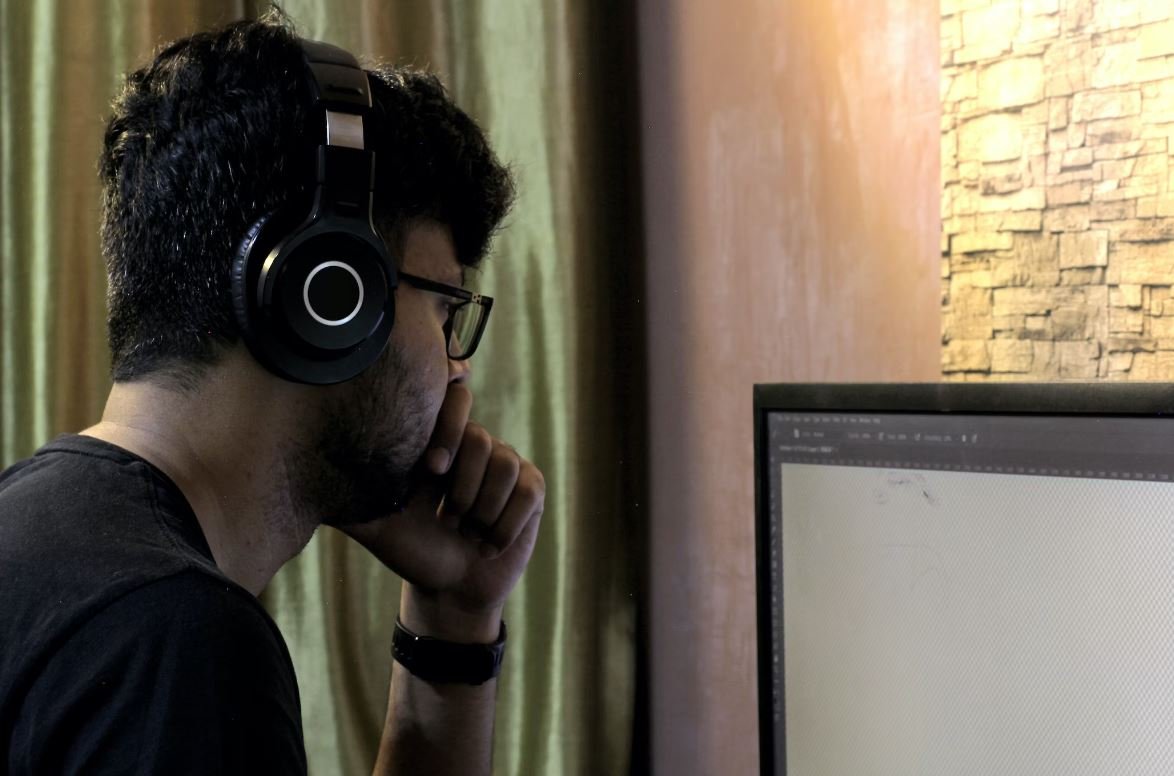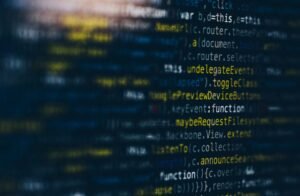Deepfake Controversy
Deepfake technology has been making headlines in recent years, raising concerns about the potential for widespread misinformation and exploitation. Deepfakes are AI-generated synthetic media, including images, audio, and videos, that appear incredibly realistic but are manipulated or entirely fabricated. While deepfakes have potential applications in entertainment and other fields, their misuse has sparked a heated debate regarding their ethical implications and the need for regulation.
Key Takeaways
- Deepfakes are realistic AI-generated media that can be manipulated or completely fabricated.
- They raise concerns about misinformation, privacy, and consent.
- Their potential applications span various industries, including entertainment and research.
- Efforts to detect and combat deepfakes are ongoing but face significant challenges.
- Regulation and education are crucial in addressing deepfake-related concerns.
The Impact of Deepfakes
Deepfakes have the potential to disrupt several aspects of our lives. They can be used maliciously to spread fabricated information, leading to severe social and political consequences. Additionally, deepfakes can infringe upon people’s privacy and create opportunities for identity theft. Moreover, the use of deepfakes in non-consensual pornography has raised serious ethical and legal concerns.
**While deepfakes can be used to manipulate real events, they can also enhance creativity for entertainment and research purposes.** By seamlessly integrating actors into historical settings or resurrecting deceased stars for new performances, deepfake technology can revolutionize the film industry and unlock opportunities for storytelling.
The Challenges of Detecting Deepfakes
**Detecting deepfakes is a complex task** due to their advanced technology and the growing sophistication of generative AI models. Frequently, deepfakes are almost indistinguishable from genuine content, making detection challenging for both humans and automated systems. **Developing effective detection methods is crucial to combat deepfake misuse.**
Here are some techniques being developed to detect deepfakes:
- Forensic analysis: Examining microscopic details and inconsistencies within the media.
- Technological solutions: Leveraging AI algorithms to identify anomalies in facial expressions, eye movements, or audio distortion.
- Source verification: Tracking the origin of media to determine authenticity.
Regulation and Education
Addressing deepfake-related concerns requires a multi-faceted approach that combines regulation and education. Governments and technology companies must collaborate to establish guidelines and legal frameworks to govern the responsible creation and distribution of deepfakes. **Educating the public about deepfake technology and its potential risks is essential to foster critical thinking and media literacy.**
Table 1: Examples of Deepfake Applications
| Industry | Applications |
|---|---|
| Entertainment | Enhancing special effects in movies or recreating deceased actors. |
| News and Politics | Spreading manipulated videos to deceive or discredit individuals. |
| Research | Creating simulation environments to study social behavior or psychological responses. |
Table 2: Detection Techniques for Deepfakes
| Technique | Description |
|---|---|
| Microscopic Analysis | Examining pixel-level artifacts and inconsistencies in the media. |
| Behavioral Analysis | Identifying unnatural facial expressions, eye movements, or audio abnormalities. |
| Source Verification | Tracing the origins of the media through metadata analysis. |
Table 3: Potential Deepfake Risks
| Risk | Description |
|---|---|
| Misinformation | Spreading false narratives and distorting public perception. |
| Privacy Invasion | Creating and sharing manipulated intimate content without consent. |
| Identity Theft | Using deepfakes to impersonate someone for financial or reputational gain. |
The Way Forward
As deepfake technology continues to advance, the risks associated with its misuse also grow. Detection methods need to evolve to keep up with the ever-improving capabilities of deepfake generation. Simultaneously, policymakers, tech companies, and individuals must work together to establish effective regulation and promote media literacy to address the widespread concerns surrounding deepfakes.

Common Misconceptions
Misconception 1: Deepfakes Are Only Used for Malicious Purposes
One common misconception people have about deepfakes is that they are solely used for malicious purposes such as spreading fake news or defaming individuals. While it is true that deepfakes have been misused in some instances, it is important to note that they also have positive applications in various industries.
- Deepfakes can be used in the entertainment industry for creating realistic special effects.
- They can be utilized in education and training to simulate real-life scenarios.
- Deepfakes have the potential to enhance accessibility for people with disabilities, by helping them perceive facial expressions and emotions more accurately.
Misconception 2: Deepfakes Are Always Easy to Detect
Another common misconception is that deepfakes are always easy to detect. While advancements in technology have made it easier to identify certain types of deepfakes, there are still many realistic and convincing deepfakes that can deceive even trained experts.
- Some deepfakes use sophisticated algorithms that make it difficult to discern any anomalies or inconsistencies.
- Deepfakes can be intentionally created with imperfections to make them appear more authentic.
- Newer deepfake techniques, such as generative adversarial networks (GANs), are becoming more challenging to detect.
Misconception 3: Deepfakes Are Mainly a Threat to Individuals
Many people wrongly assume that deepfakes primarily pose a threat to individual privacy or reputation. While individuals can certainly be targeted by deepfakes, the impact extends beyond personal harm and can affect society as a whole.
- Deepfakes can be used to manipulate public opinion and influence political discourses.
- They have the potential to undermine trust in media and create misinformation campaigns.
- The rise of deepfake technology raises concerns about data security and the authenticity of digital content.
Misconception 4: Deepfakes Are Always Video-Based
There is a misconception that deepfakes are limited to altering videos or images. However, deepfake technology can also be applied to other forms of media, expanding the potential for deception and manipulation.
- Deepfakes can be created using audio recordings to mimic someone’s voice or create synthetic speech.
- Text-based deepfakes, known as “deepfakes for text,” can generate artificial content that imitates an individual’s writing style.
- Deepfakes have even been experimented with in virtual reality, allowing for highly immersive deceptive experiences.
Misconception 5: Deepfakes Are a New Phenomenon
While deepfakes have gained significant attention in recent years, they are not as new as some might think. The term “deepfake” itself originated in 2017, but the use of similar techniques can be traced back further.
- The concept of swapping faces in videos has been explored since the early days of computer graphics and image processing.
- Deepfakes build upon existing technologies such as machine learning and artificial intelligence.
- Early versions of deepfakes emerged in the early 2000s with techniques like face morphing.

History of Deepfake Technology
Table showing the timeline of key events in the development of deepfake technology and its applications.
| Year | Event |
|——|———————–|
| 2014 | Deepfake first coined |
| 2016 | Deepfake app released |
| 2017 | Deepfake celebrity videos emerge |
| 2018 | Deepfake porn controversy |
| 2019 | Deepfake political manipulation |
| 2020 | Deepfake detection tools improve |
| 2021 | Deepfake impact on trust and misinformation |
| 2022 | Deepfake regulations proposed |
| 2023 | Deepfake technology advances |
Deepfake Use Cases
Table showcasing various sectors and industries in which deepfake technology has been utilized.
| Industry | Deepfake Use Case |
|————–|——————————————————–|
| Entertainment| Celebrity impersonation in films and music videos |
| Politics | Manipulating political speeches and debates |
| Marketing | Creating lifelike virtual models for advertisements |
| Journalism | Generating realistic news anchor deepfake videos |
| Education | Historical figures brought to life for immersive lessons|
| Sports | Simulating realistic footage in sports broadcasts |
| Security | Digital identity fraud prevention and detection |
| Medicine | Training doctors through simulated patient interactions|
| Gaming | Creating interactive characters with realistic visuals |
| Art | Transforming artworks based on different artistic styles|
Impact of Deepfakes on Society
Table highlighting the potential positive and negative consequences of deepfake technology.
| Impact | Description |
|———–|—————————————————————————–|
| Misinformation | Spreading false narratives and manipulating public perception |
| Privacy | Violation of personal boundaries and the potential use in online harassment|
| Education | Advancing immersive learning experiences through historic recreations |
| Entertainment | Enhancing visual effects and creating unique storytelling opportunities |
| Politics | Undermining trust in political leadership and distorting public opinion |
| Journalism | Raising concerns over the authenticity and verification of news content |
| Cybersecurity | Enabling more sophisticated forms of fraud and digital deception |
| Humor | Inspiring creative parodies and comedic content |
| Artistry | Pushing the boundaries of visual media and artistic expression |
| Ethics | Sparking conversations about the responsible use of emerging technologies|
Deepfake Regulation Efforts
Table showcasing the current status of deepfake regulations and actions taken by various countries or organizations.
| Country/Organization | Deepfake Regulation Status and Actions |
|———————-|———————————————————————-|
| United States | Legal actions against non-consensual deepfake porn |
| European Union | Drafting regulations to combat deepfake political manipulation |
| Australia | Proposing laws to criminalize the creation and distribution of deepfakes|
| South Korea | Invested in technology and education to combat deepfake threats |
| United Kingdom | Conducting research for potential deepfake legislation |
| Facebook | Implementing policies to remove deepfakes violating community standards|
| Twitter | Introducing warning labels for manipulated media and deepfakes |
| Google | Developing deepfake detection technology and tools |
| MIT | Researching methods to detect deepfakes and counteract their impact |
| UNESCO | Focusing on raising awareness of deepfake threats and promoting education|
Deepfake Detection Methods
Table presenting different techniques and approaches employed to identify deepfake videos.
| Detection Method | Description |
|——————–|—————————————————————————————|
| Facial Landmarks | Analyzing the positioning and movement of facial features for discrepancies |
| Lip-Sync Analysis | Assessing the synchronization of audio and visual cues in lip movements |
| Metadata Analysis | Scrutinizing the digital properties and metadata of the media file |
| Forensic Analysis | Conducting pixel-level analysis and statistical techniques to detect anomalies |
| Machine Learning | Training algorithms to identify patterns and irregularities in deepfake videos |
| Voice Analysis | Examining audio characteristics to identify manipulated speech |
| Behavior Analysis | Observing inconsistencies in subject behavior, including eye blinking and head movement|
| Source Authenticity| Verifying the original source and data integrity of the video |
| Biometric Analysis | Using facial recognition technology to compare in-video faces with real identities |
| Reverse Engineering| Analyzing deepfake creation methods to understand and detect common algorithms |
Deepfake Impact on Democracy
Table highlighting the potential consequences of deepfake technology on democratic processes and systems.
| Consequence | Description |
|—————-|—————————————————————————–|
| Political Manipulation | Misleading voters through fabricated speeches and statements |
| Trust Erosion | Undermining trust in political institutions and public figures |
| Electoral Influence | Affecting election outcomes by spreading disinformation and fake news |
| Public Discourse | Distorting public debates and potentially silencing certain perspectives |
| Media Integrity | Challenging the credibility and authenticity of news content |
| Voter Suppression | Discouraging participation and undermining belief in fair elections |
| Foreign Interference | Enabling foreign entities to manipulate public opinion |
| Legislative Response | Urging governments to address deepfake threats through regulation |
| Election Security | Enhancing cybersecurity measures to protect against deepfake attacks |
| Media Literacy | Promoting critical thinking skills and digital literacy education |
Advances in Deepfake Technology
Table showcasing recent advancements and breakthroughs in deepfake technology.
| Year | Advancement |
|——|——————————–|
| 2019 | Deepfake audio production |
| 2020 | High-resolution face synthesis |
| 2021 | Real-time video synthesis |
| 2022 | Enhanced voice conversion |
| 2023 | Improved emotion recognition |
| 2024 | Multi-modal deepfakes |
| 2025 | Deepfake detection AI |
| 2026 | 3D deepfakes |
| 2027 | Interactive deepfake content |
| 2028 | Realistic deepfake scenography |
The Deepfake Controversy
Deepfake technology, with its ability to manipulate visual and audio content, has generated significant controversy and raised important ethical, legal, and social concerns. Misinformation, privacy violations, and the erosion of trust are just a few of the negative impacts associated with the spread of deepfakes. However, deepfake technology also offers innovative opportunities in entertainment, education, and artistic expression. Efforts to regulate deepfakes are underway globally, aiming to prevent malicious uses while allowing for responsible applications. Advancements in deepfake detection techniques are crucial in combating the increasing sophistication of manipulated media. As deepfake technology continues to evolve, its impact on society, democracy, and media integrity remains a pressing issue that demands attention and thoughtful responses.
Frequently Asked Questions
What is a deepfake?
A deepfake is an artificial intelligence technique used to manipulate or alter media content, such as images, videos, or audio, to create counterfeit or fabricated content that appears real.
How are deepfakes created?
Deepfakes are created by utilizing machine learning algorithms, particularly deep neural networks, to analyze and generate new media content by combining existing content with desired characteristics or attributes.
What are the main concerns related to deepfakes?
The main concerns surrounding deepfakes include the potential for misinformation and deception, threats to privacy and consent, blackmail or extortion, harm to individuals’ reputation, and manipulation of public discourse.
Can deepfakes be used for positive purposes?
While deepfakes have predominantly been associated with negative consequences, there are potential positive applications, such as entertainment, creative expression, education, and research, as long as they are used ethically and responsibly.
How can deepfakes be detected?
Detecting deepfakes can be challenging due to their advanced techniques; however, various methods including forensic analysis, deepfake detection algorithms, and human judgement can be employed to identify potential signs of manipulation.
What measures are being taken to combat deepfakes?
Organizations, researchers, and technology companies are actively developing and improving deepfake detection tools, raising awareness about deepfake risks, promoting media literacy, and advocating for regulations and ethical guidelines to address the issue.
What legal implications do deepfakes have?
Deepfakes raise numerous legal concerns, including issues related to privacy, intellectual property, defamation, identity theft, fraud, and the manipulation of elections or political campaigns. Laws may vary across jurisdictions, and lawmakers are working to adapt legislation to address these challenges.
Can deepfakes be used for political manipulation?
Yes, deepfakes have the potential to be employed as a tool for political manipulation by distorting speeches, altering videos of political figures, or spreading fabricated news to influence public opinion and manipulate election outcomes.
How can individuals protect themselves from the risks associated with deepfakes?
To protect oneself from the risks of deepfakes, individuals can utilize reliable news sources, fact-check information, be cautious of suspicious or manipulated media content, enhance digital literacy skills, and consider implementing advanced privacy and security measures.
What is the future of deepfakes?
The future of deepfakes holds both promising and challenging aspects. While the technology can enhance various fields, such as entertainment and virtual reality, there is a need for ongoing research, regulation, and public awareness to mitigate potential risks and ensure responsible usage.




